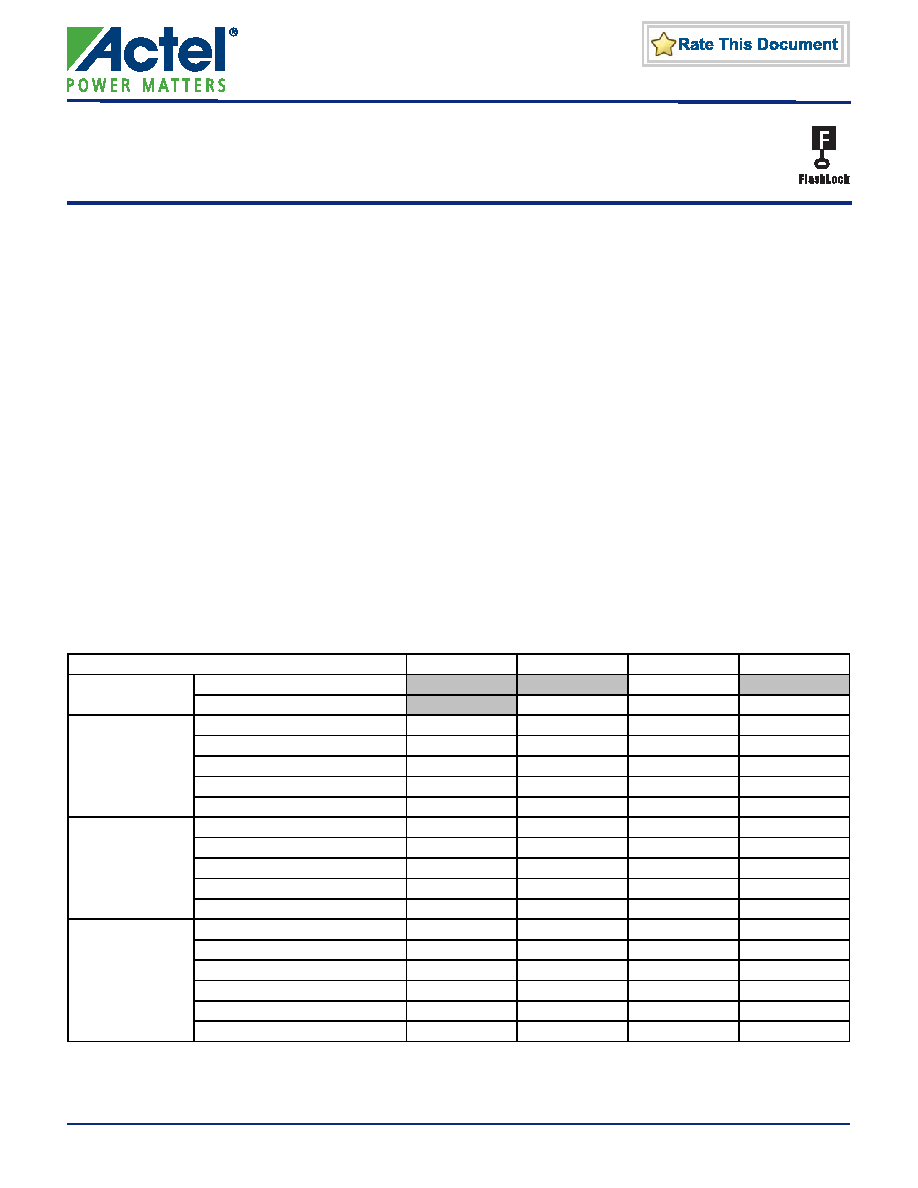- 您現(xiàn)在的位置:買賣IC網(wǎng) > PDF目錄180066 > M1AFS250-FPQG208 FPGA, 250000 GATES, PQFP208 PDF資料下載
參數(shù)資料
| 型號(hào): | M1AFS250-FPQG208 |
| 元件分類: | FPGA |
| 英文描述: | FPGA, 250000 GATES, PQFP208 |
| 封裝: | 0.50 MM PITCH, GREEN, PQFP-208 |
| 文件頁數(shù): | 1/318頁 |
| 文件大?。?/td> | 10129K |
| 代理商: | M1AFS250-FPQG208 |
當(dāng)前第1頁第2頁第3頁第4頁第5頁第6頁第7頁第8頁第9頁第10頁第11頁第12頁第13頁第14頁第15頁第16頁第17頁第18頁第19頁第20頁第21頁第22頁第23頁第24頁第25頁第26頁第27頁第28頁第29頁第30頁第31頁第32頁第33頁第34頁第35頁第36頁第37頁第38頁第39頁第40頁第41頁第42頁第43頁第44頁第45頁第46頁第47頁第48頁第49頁第50頁第51頁第52頁第53頁第54頁第55頁第56頁第57頁第58頁第59頁第60頁第61頁第62頁第63頁第64頁第65頁第66頁第67頁第68頁第69頁第70頁第71頁第72頁第73頁第74頁第75頁第76頁第77頁第78頁第79頁第80頁第81頁第82頁第83頁第84頁第85頁第86頁第87頁第88頁第89頁第90頁第91頁第92頁第93頁第94頁第95頁第96頁第97頁第98頁第99頁第100頁第101頁第102頁第103頁第104頁第105頁第106頁第107頁第108頁第109頁第110頁第111頁第112頁第113頁第114頁第115頁第116頁第117頁第118頁第119頁第120頁第121頁第122頁第123頁第124頁第125頁第126頁第127頁第128頁第129頁第130頁第131頁第132頁第133頁第134頁第135頁第136頁第137頁第138頁第139頁第140頁第141頁第142頁第143頁第144頁第145頁第146頁第147頁第148頁第149頁第150頁第151頁第152頁第153頁第154頁第155頁第156頁第157頁第158頁第159頁第160頁第161頁第162頁第163頁第164頁第165頁第166頁第167頁第168頁第169頁第170頁第171頁第172頁第173頁第174頁第175頁第176頁第177頁第178頁第179頁第180頁第181頁第182頁第183頁第184頁第185頁第186頁第187頁第188頁第189頁第190頁第191頁第192頁第193頁第194頁第195頁第196頁第197頁第198頁第199頁第200頁第201頁第202頁第203頁第204頁第205頁第206頁第207頁第208頁第209頁第210頁第211頁第212頁第213頁第214頁第215頁第216頁第217頁第218頁第219頁第220頁第221頁第222頁第223頁第224頁第225頁第226頁第227頁第228頁第229頁第230頁第231頁第232頁第233頁第234頁第235頁第236頁第237頁第238頁第239頁第240頁第241頁第242頁第243頁第244頁第245頁第246頁第247頁第248頁第249頁第250頁第251頁第252頁第253頁第254頁第255頁第256頁第257頁第258頁第259頁第260頁第261頁第262頁第263頁第264頁第265頁第266頁第267頁第268頁第269頁第270頁第271頁第272頁第273頁第274頁第275頁第276頁第277頁第278頁第279頁第280頁第281頁第282頁第283頁第284頁第285頁第286頁第287頁第288頁第289頁第290頁第291頁第292頁第293頁第294頁第295頁第296頁第297頁第298頁第299頁第300頁第301頁第302頁第303頁第304頁第305頁第306頁第307頁第308頁第309頁第310頁第311頁第312頁第313頁第314頁第315頁第316頁第317頁第318頁

October 2008
I
2009 Actel Corporation
Actel Fusion Mixed-Signal FPGAs
Family with Optional ARM Support
Features and Benefits
High-Performance Reprogrammable Flash
Technology
Advanced 130-nm, 7-Layer Metal, Flash-Based CMOS Process
Nonvolatile, Retains Program when Powered Off
Live at Power-Up (LAPU) Single-Chip Solution
350 MHz System Performance
Embedded Flash Memory
User Flash Memory – 2 Mbits to 8 Mbits
– Configurable 8-, 16-, or 32-Bit Datapath
– 10 ns Access in Read-Ahead Mode
1 kbit of Additional FlashROM
Integrated A/D Converter (ADC) and Analog I/O
Up to 12-Bit Resolution and up to 600 ksps
Internal 2.56 V or External Reference Voltage
ADC: Up to 30 Scalable Analog Input Channels
High-Voltage Input Tolerance: –10.5 V to +12 V
Current Monitor and Temperature Monitor Blocks
Up to 10 MOSFET Gate Driver Outputs
– P- and N-Channel Power MOSFET Support
– Programmable 1, 3, 10, 30 A and 20 mA Drive Strengths
ADC Accuracy is Better than 1%
On-Chip Clocking Support
Internal 100 MHz RC Oscillator (accurate to 1%)
Crystal Oscillator Support (32 kHz to 20 MHz)
Programmable Real-Time Counter (RTC)
6 Clock Conditioning Circuits (CCCs) with 1 or 2 Integrated
PLLs
– Phase Shift, Multiply/Divide, and Delay Capabilities
– Frequency: Input 1.5–350 MHz, Output 0.75–350 MHz
Low Power Consumption
Single 3.3 V Power Supply with On-Chip 1.5 V Regulator
Sleep and Standby Low Power Modes
In-System Programming (ISP) and Security
Secure ISP with 128-Bit AES via JTAG
FlashLock to Secure FPGA Contents
Advanced Digital I/O
1.5 V, 1.8 V, 2.5 V, and 3.3 V Mixed-Voltage Operation
Bank-Selectable I/O Voltages – Up to 5 Banks per Chip
Single-Ended
I/O
Standards:
LVTTL,
LVCMOS
3.3V/2.5 V/1.8V/1.5 V,
3.3VPCI
/
3.3VPCI-X,
and
LVCMOS 2.5 V / 5.0 V Input
Differential I/O Standards: LVPECL, LVDS, BLVDS, and M-LVDS
– Built-In I/O Registers
– 700 Mbps DDR Operation
Hot-Swappable I/Os
Programmable Output Slew Rate, Drive Strength, and Weak
Pull-Up/Down Resistor
Pin-Compatible Packages across the Fusion Family
SRAMs and FIFOs
Variable-Aspect-Ratio 4,608-Bit SRAM Blocks (×1, ×2, ×4, ×9,
and ×18 organizations available)
True Dual-Port SRAM (except ×18)
Programmable Embedded FIFO Control Logic
Soft ARM7 Core Support in M7 and M1 Fusion Devices
ARM Cortex-M1 (without debug), CoreMP7Sd (with
debug) and CoreMP7S (without debug)
Fusion Family
Fusion Devices
AFS090
AFS250
AFS600
AFS1500
ARM-Enabled
Fusion Devices
CoreMP7 1
M7AFS600
Cortex-M1 2
M1AFS250
M1AFS600
M1AFS1500
General
Information
System Gates
90,000
250,000
600,000
1,500,000
Tiles (D-flip-flops)
2,304
6,144
13,824
38,400
Secure (AES) ISP
Yes
PLLs
1
2
Globals
18181818
Memory
Flash Memory Blocks (2 Mbits)
1
2
4
Total Flash Memory Bits
2 M
4 M
8 M
FlashROM Bits
1 k
RAM Blocks (4,608 bits)
6
8
24
60
RAM kbits
27
36
108
270
Analog and I/Os
Analog Quads
5
6
10
Analog Input Channels
15
18
30
Gate Driver Outputs
5
6
10
I/O Banks (+ JTAG)
4
5
Maximum Digital I/Os
75
114
172
252
Analog I/Os
20
24
40
Notes:
1. Refer to the CoreMP7 datasheet for more information.
2. Refer to the Cortex-M1 product brief for more information.
Preliminary v1.7
相關(guān)PDF資料 |
PDF描述 |
|---|---|
| M1AFS250-FQN180 | FPGA, 250000 GATES, PBCC180 |
| M1AFS250-FQNG180 | FPGA, 250000 GATES, PBCC180 |
| M20-1051700 | 34 CONTACT(S), FEMALE, TWO PART BOARD CONNECTOR, CRIMP, SOCKET |
| M20-1051800 | 36 CONTACT(S), FEMALE, TWO PART BOARD CONNECTOR, CRIMP, SOCKET |
| M20-1052400 | 48 CONTACT(S), FEMALE, TWO PART BOARD CONNECTOR, CRIMP, SOCKET |
相關(guān)代理商/技術(shù)參數(shù) |
參數(shù)描述 |
|---|---|
| M1AFS250-FPQG256ES | 制造商:ACTEL 制造商全稱:Actel Corporation 功能描述:Actel Fusion Mixed-Signal FPGAs |
| M1AFS250-FPQG256I | 制造商:ACTEL 制造商全稱:Actel Corporation 功能描述:Actel Fusion Mixed-Signal FPGAs |
| M1AFS250-FPQG256PP | 制造商:ACTEL 制造商全稱:Actel Corporation 功能描述:Actel Fusion Mixed-Signal FPGAs |
| M1AFS250-FQN256ES | 制造商:ACTEL 制造商全稱:Actel Corporation 功能描述:Actel Fusion Mixed-Signal FPGAs |
| M1AFS250-FQN256I | 制造商:ACTEL 制造商全稱:Actel Corporation 功能描述:Actel Fusion Mixed-Signal FPGAs |
發(fā)布緊急采購,3分鐘左右您將得到回復(fù)。